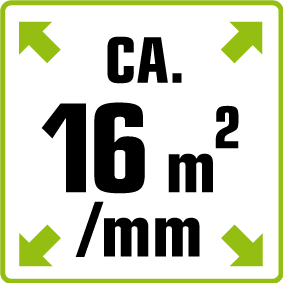FLA330 F omniflow
Levelling mortars
Applications
FLA330 F omniflow is a fibre-reinforced calcium sulphate-bonded levelling mortar. Suitable for all common floor coverings, such as ceramic tiles, linoleum, PVC, parquet, etc. For use in dry interior areas only. FLA330 F omniflow is ideal for post-levelling anhydrite screed floors, cement-bound screeds and poured floors, concrete and existing tiles with (electric) underfloor heating. Also highly suitable for levelling screeds with or without underfloor heating. Can be tiled from approximately 24 hours afterwards. Other covering can be installed from approximately 48 hours afterwards, depending on the layer thickness and air humidity. It is a very fluid mortar, giving a perfectly smooth result after hardening. The mortar can be pumped (please consult us for the type of pump). FLA330 F omniflow produces a tension-free and shrink-proof layer, cracks with layer thicknesses of up to 30 mm are practically impossible. Larger layer thicknesses possible in multiple operations.







Getting started with FLA330 F omniflow
Certificates and documents
Download the documents available from this specific product here.
Can't find the right certificate?
Contact usLet us help you out
When do I choose a gypsum-bound plaster mortar or a cement-bound plaster mortar? And can I combine these?
The choice between gypsum mortar and cement mortar depends on the application. Plaster mortar is a good choice for dry indoor applications where a smooth finish is important. Plaster mortar is not ideal in wet areas. Cement mortar is resistant to moisture and extreme temperatures and is a better choice for wet areas and outdoor applications. Cement mortar has much higher strength and is more durable than gypsum mortar.
What determines whether the leveling compound is suitable for the chosen final finish?
The combination of flatness, smoothness and hardness of the top layer determines whether a soft or hard covering can be placed, such as tiles or PVC. A rougher top layer is much less important for a finish with tiles, while for a floor finish with, for example, PVC and marmoleum, an extremely smooth top layer is necessary. The flow rate may differ per grade or type of leveling compound. But with proper use, all our leveling compounds will become perfectly flat.
What temperature should the subfloor be during leveling?
During processing it is necessary to keep the temperature of the subfloor, space and material between 15 °C and 25 °C. In addition, the relative 65% of the lager must be before, during and a few days after maceration!







